Related Research Articles
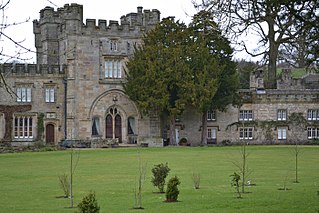
Bolton Abbey in Wharfedale, North Yorkshire, England, takes its name from the ruins of the 12th-century Augustinian monastery now known as Bolton Priory. The priory, closed in the 1539 Dissolution of the Monasteries ordered by King Henry VIII, is in the Yorkshire Dales, next to the village of Bolton Abbey.
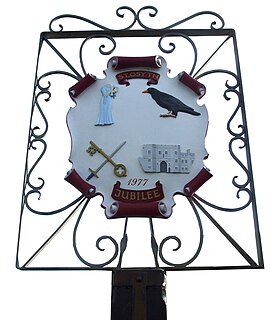
St Osyth is an English village and civil parish in the Tendring District of north-east Essex, about 5 miles (8.0 km) west of Clacton-on-Sea and about 12 miles (19.3 km) south-east of Colchester. It is located on the B1027 road. The village is named after Osgyth, a 7th-century saint and princess. Locally, the name is sometimes pronounced "Toosey". St Osyth is claimed to be the driest recorded place in the United Kingdom.
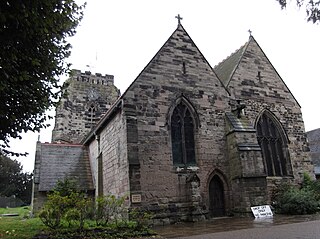
Polesworth Abbey was a Benedictine nunnery in Polesworth, North Warwickshire, England.

Woodspring Priory is a former Augustinian priory. It is near the scenic limestone promontory of Sand Point and Middle Hope, owned by the National Trust, beside the Severn Estuary about 3 miles (5 km) north-east of Weston-super-Mare, within the English unitary authority of North Somerset. Many of the buildings are Grade I listed, and the whole site is scheduled as an ancient monument.

Shilton is a village and civil parish about 1 1⁄2 miles (2.4 km) northwest of Carterton, Oxfordshire. The 2011 Census recorded the parish's population as 626.
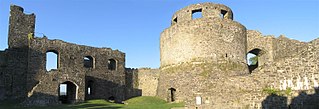
Dinefwr Castle is a ruined castle overlooking the River Tywi near the town of Llandeilo, Carmarthenshire, Wales. It lies on a ridge on the northern bank of the Tywi, with a steep drop of one hundred feet to the river. Dinefwr was the chief seat of the Kingdom of Deheubarth. The castle is a Grade I listed building.
Amesbury Abbey was a Benedictine abbey of women at Amesbury in Wiltshire, England, founded by Queen Ælfthryth in about the year 979 on what may have been the site of an earlier monastery. That foundation was dissolved in 1177 by Henry II, who founded in its place a house of the Order of Fontevraud, known as Amesbury Priory.

Wienhausen Abbey or Convent near Celle in Lower Saxony, Germany, is a community of Evangelical Lutheran women, which until the Reformation was a Cistercian Catholic nunnery. The abbey owns significant artworks and artifacts, including a collection of tapestries and the earliest surviving example of a type of eyeglasses.

Stratford Langthorne Abbey, or the Abbey of St Mary's, Stratford Langthorne was a Cistercian monastery founded in 1135 at Stratford Langthorne — then Essex but now Stratford in the London Borough of Newham. The Abbey, also known as West Ham Abbey as it lay in that parish, was one of the largest Cistercian abbeys in England, possessing 1,500 acres (6.07 km2) of local land, controlling over 20 manors throughout Essex. The Abbey was self-sufficient for its needs and wealthy besides; some of this wealth came from the ecclesiastic mills grinding wheat for local bakers to supply bread to the City of London. This later led to competition with the Guild of Bakers, who sought powers to levy a toll on loaves entering the City at Whitechapel.
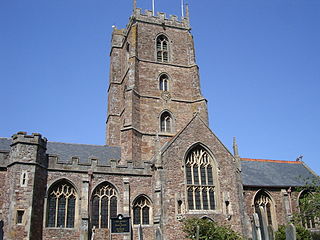
Dunster Priory was established as a Benedictine monastery around 1100 in Dunster, Somerset, England.
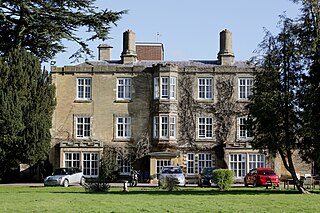
Tickford Priory was a medieval monastic house in Newport Pagnell in Buckinghamshire, England.

St Osyth's Abbey was a house of Augustinian canons in the parish of St Osyth in Essex, England in use from the 12th to 16th centuries. Founded by Richard de Belmeis, Bishop of London, c. 1121, it became one of the largest religious houses in Essex. It was dedicated to Saints Peter and Paul as well as St Osyth (Osith), a royal saint and virgin martyr. Bishop Richard obtained the arm bone of St Osyth from Aylesbury for the monastic church and granted the canons the parish church of St Osyth.

Ellerton in Swaledale Priory was a Priory of Cistercian nuns in the parish of Ellerton Abbey, North Yorkshire, England. It was established by the Egglescliffe family in the late 12th century. In 1342 it suffered badly at the hands of marauding Scots, who are described as having razed and despoiled the Priory. The priory was formally surrendered to the Crown in August 1536 and dissolved in the following year. The site is a scheduled Ancient Monument and parts of the priory are grade II listed.
Eye Priory was a Benedictine Priory dedicated to St Peter in the town of Eye in the UK county of Suffolk. It was founded by Robert Malet c. 1080 and originally an Alien Priory dependent on the Abbey of Bernay in Normandy. It became independent in 1385 by charter of Richard II when it could support only 3 -4 monks. It was finally dissolved in 1537 as part of the dissolution of the monasteries with the lands being given to Charles Brandon.
Wolston Priory was a Benedictine priory near Wolston in Warwickshire, England. The earthwork remains of the priory are a Scheduled Ancient Monument. A present grade II* listed house is based on the remains of the rectory.
Cookhill Priory was a Cistercian nunnery near Cookhill in Worcestershire, England. It is said to be founded by Isabel de Mauduit, wife of William de Beauchamp, 9th Earl of Warwick in 1260, but it most likely dates to some years before then. It is on record that she was buried at Cookhill when she died, and that she had become a nun there by the time of his death in 1298. A tomb with a broken dedication was still present in the chapel in seventeenth century.

The Abbey Church of Saint Peter and Saint Paul, Monkwearmouth–Jarrow, known simply as Monkwearmouth–Jarrow Abbey, was a Benedictine double monastery in the Kingdom of Northumbria, England.
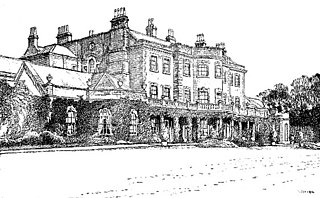
Wykeham Abbey is a Grade II* listed country house in Wykeham, North Yorkshire, England. It has been the seat of the Viscounts Downe since the early 20th century.
References
- 1 2 Pinley priory: a Cistercian nunnery and post-Dissolution garden, Listing Particulars for Scheduled Monument 1013160, Historic England. Accessed 16 December 2017
